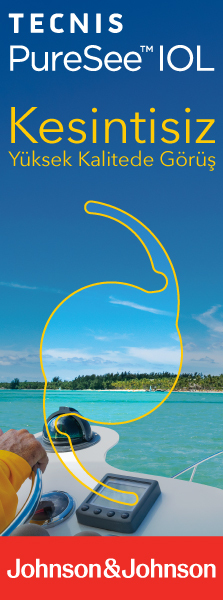2Assoc. Prof., Beyoglu Eye Training and Research Hospital, Cornea, Istanbul, Turkey
3Assist. Dr., Beyoglu Eye Training and Research Hospital, Cornea, Istanbul, Turkey DOI : 10.37844/glauc.cat.2021.16.31 Purpose: To compare the visual acuity, topographic and the biomicroscopic features in patients who had accelerated corneal crosslinking (CXL) by using hydroxypropyl methylcellulose-based (HPMC) or dextran- based riboflavin solutions.
Materials and Methods: In this study, 62 eyes with progressive keratoconus were included. Accelerated CXL has been performed to all patients. Riboflavin with dextran (0.1% Riboflavin, 20% dextran) (n: 33) or HPMC (0.1% Riboflavin, 1.1% HPMC) (n: 29) were used as photosensitizer in CXL procedure. Visual acuity, topographic measurements and biomicroscopic features were compared between 2 groups in 12 months of follow-up.
Results: Totally 62 eyes (34 right and 28 left) of 62 patients (25 female, 37 male) with a mean age of 24.37±6.93 years were included. Although best corrected visual acuity (0.29 ±0.16 vs 0.28±0.16; p= 0.89) and uncorrected visual acuity (0.62 ±0.34 vs 0.48±0.29; p=0.08) were both better in dextran free riboflavin group at 12th month of follow-up, the differences between 2 groups were not statistically significant. There was not any statistically significant difference between groups regarding any of the topographic findings. The biomicroscopic findings were also very similar in first, sixth and 12th months of follow-up in both groups. Corneal haze was the most common finding in the 1st month of follow up in all cases.
Conclusions: Accelerated CXL procedures performed by using riboflavin with dextran or HPMC represent similar affects in corneal parameters during the 12 months of follow-up period. Larger studies with longer follow-up periods are warranted to define the differences and similarities of these 2 photosensitizers.
Keywords : accelerated crosslinking, hydroxypropyl methylcellulose, keratoconus, riboflavin




